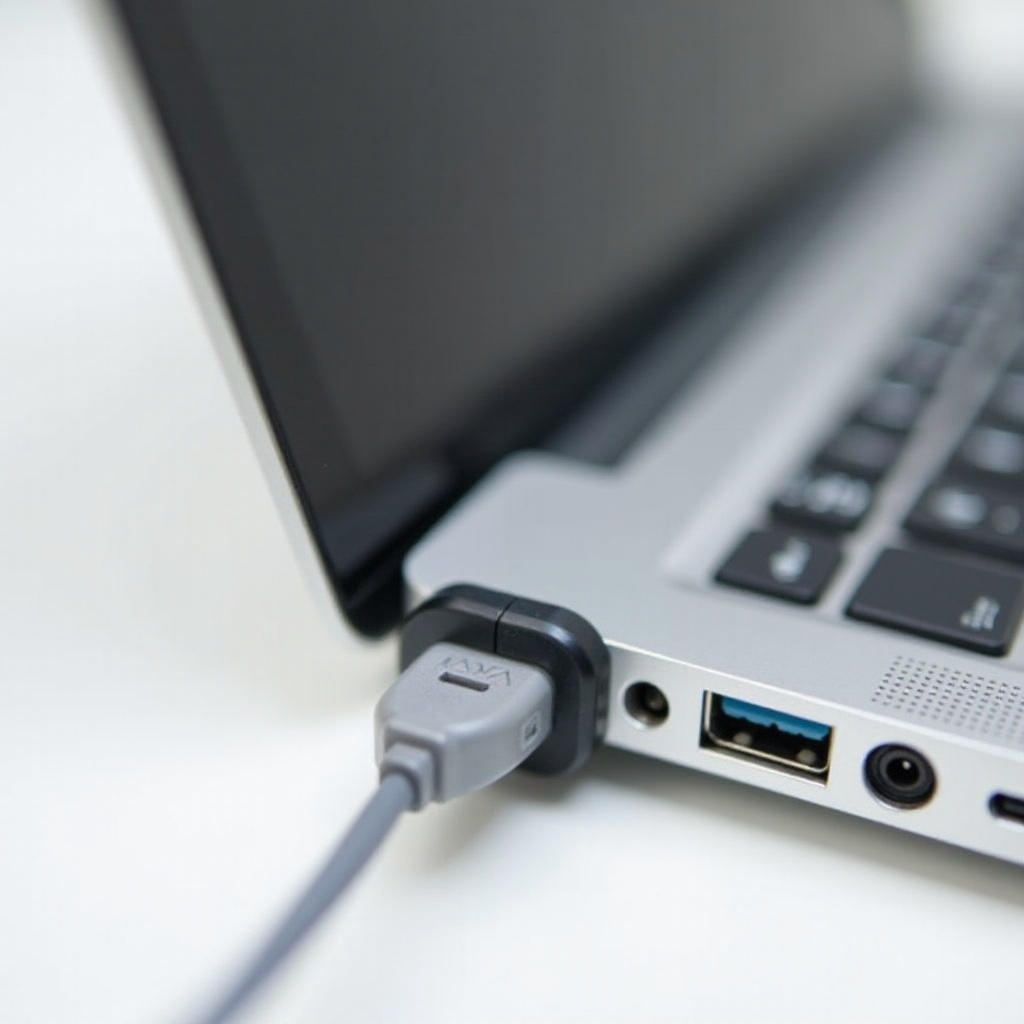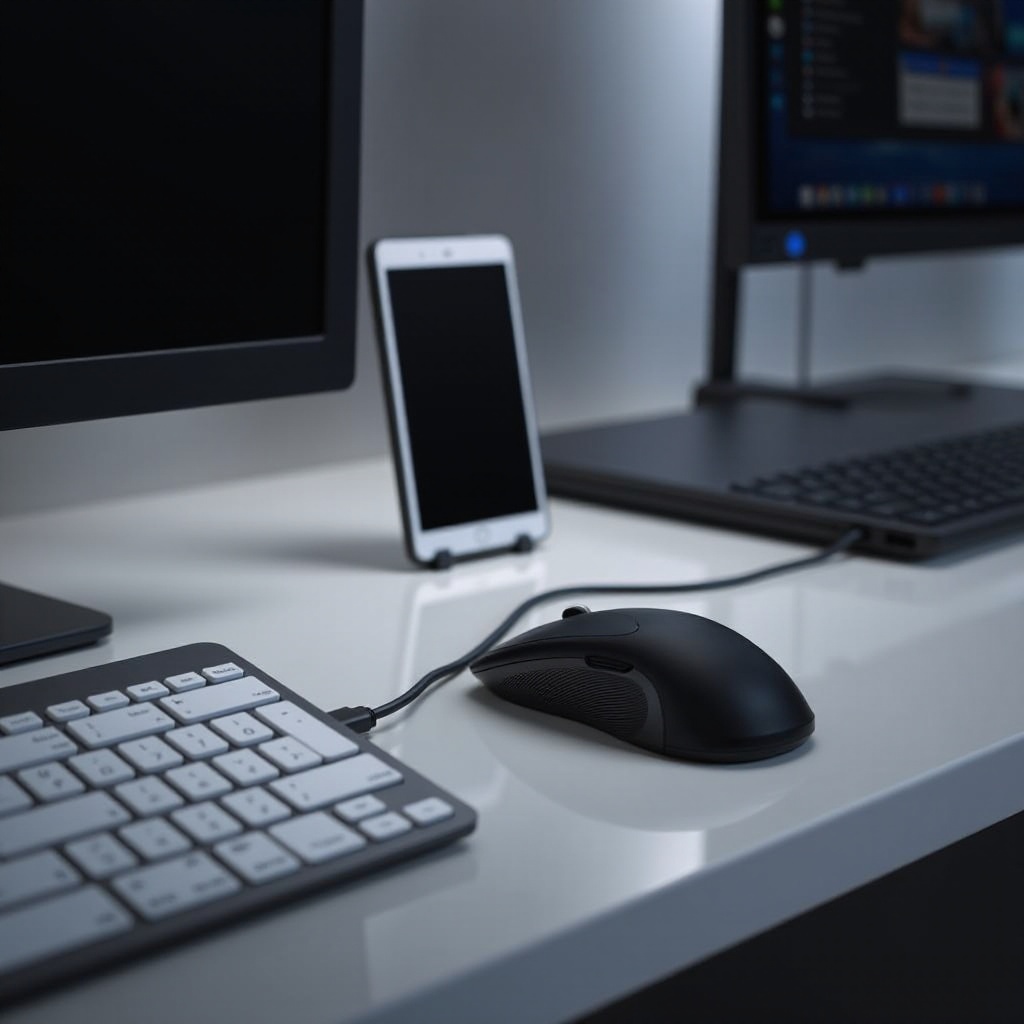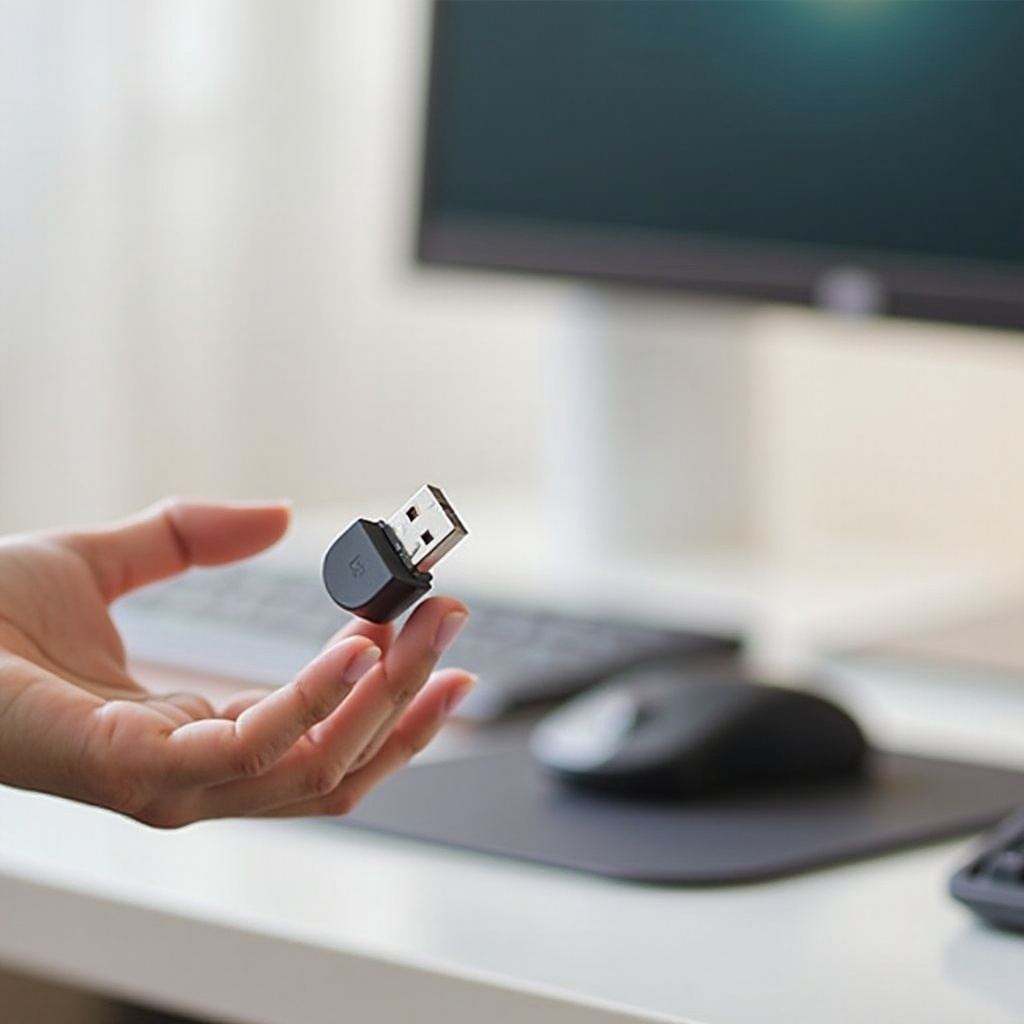Introduction
Discovering the perfect wireless experience begins with understanding the right technology to use. The 2.4G universal USB receiver for keyboards and mice offers a seamless way to connect these essential devices to your computer. Unlike the more well-known Bluetooth technology, the 2.4G receiver uses a radio frequency for transmission, providing several notable benefits. This guide delves into the workings of the 2.4G universal USB receiver, its advantages, setup, compatibility, as well as troubleshooting tips and expert advice for maximizing your device’s performance.

What is a 2.4G Universal USB Receiver?
The 2.4G universal USB receiver is a small yet powerful device designed to connect wireless keyboards and mice to your computer. It operates on the 2.4 GHz frequency band, a common frequency for various wireless transmission applications. This receiver plugs into a USB port on your computer, acting as a bridge between your computer and the wireless devices. By using radio frequency, it ensures a stable and fast connection without the complexities associated with Bluetooth pairing.
2.4G receivers are highly valued for their low latency, high reliability, and ease of use. The utility of this receiver spans across many environments—from home offices to gaming setups, and even professional workstations. Whether you’re typing up a report or engaging in an intense gaming session, the 2.4G receiver ensures your devices communicate promptly and securely with your computer.
Advantages of 2.4G Technology Over Bluetooth
When comparing 2.4G technology to Bluetooth, there are several advantages that stand out. First and foremost, 2.4G offers lower latency. This means that your keyboard and mouse inputs are registered more rapidly, which is crucial for tasks requiring quick responses, such as gaming or high-speed typing.
Secondly, the connectivity range of a 2.4G receiver is generally broader. While Bluetooth typically functions optimally within 10 meters, 2.4G receivers can often support a range of up to 30 meters. This increased range makes it ideal for use in larger rooms or spaces where you might not always be close to your computer.
Additionally, 2.4G receivers experience fewer interference issues. Bluetooth operates in a crowded frequency spectrum, competing with numerous other devices. In contrast, 2.4G technology uses specific channels to minimize interference, thus ensuring a more stable connection. These advantages make 2.4G receivers the preferred choice for many users seeking reliable and responsive wireless connectivity.
Setting Up Your 2.4G Universal USB Receiver
Setting up your 2.4G universal USB receiver is a straightforward process. Here’s a step-by-step guide to help you get started:
- Unbox Your Devices: Ensure that your wireless keyboard, mouse, and the USB receiver are within your reach.
- Insert the USB Receiver: Plug the 2.4G USB receiver into an available USB port on your computer. It’s preferable to use a port on your computer’s front or elsewhere that avoids obstructions.
- Power On Devices: Turn on your wireless keyboard and mouse. Most devices have an on/off switch to save battery life.
- Automatic Pairing: Typically, the wireless devices will automatically pair with the receiver. You might see a small notification pop up on your computer screen indicating that the new devices are connected and ready to use.
- Test Connectivity: Move your mouse and ensure the cursor responds accordingly. Similarly, type a few words on your keyboard to check functionality.
- Install Drivers (If Necessary): Most modern operating systems will automatically recognize and install any necessary drivers. If your devices do not function immediately, consider manually installing drivers from the manufacturer’s website.
By following these steps, you can ensure that your 2.4G universal USB receiver and connected devices work optimally.
Compatibility with Various Devices
One of the key benefits of a 2.4G universal USB receiver is its broad compatibility with numerous devices. The receivers are designed to work with most wireless keyboards and mice available in the market. This ensures that regardless of your brand preference—from Logitech to Microsoft, you will likely find that your devices are compatible.
Moreover, these receivers generally support various operating systems, including Windows, macOS, and Linux. This cross-platform functionality ensures that no matter what computer system you are using, you’ll still be able to enjoy the benefits of the 2.4G connection.
In addition to traditional desktops and laptops, 2.4G receivers can also connect to other USB-enabled devices like smart TVs and gaming consoles. This versatility extends the usability of your wireless peripherals beyond just computing, allowing for greater flexibility and efficiency in your home or office setup.

Troubleshooting Common Issues
Despite the ease of use and reliability of 2.4G universal USB receivers, users may occasionally encounter issues. Here are common problems and solutions:
- No Connection or Delayed Response:
- Solution: Ensure the receiver is properly plugged into the USB port. Try re-inserting it or connecting to a different port. Verify that your keyboard and mouse are switched on and have working batteries.
- Interference:
- Solution: Remove any other electronic devices that may be causing interference. Adjust the position of the receiver to minimize obstacles between it and your peripherals. Using a USB extension cable can help position the receiver in a better signal area.
- Drivers Not Installing:
- Solution: Visit the manufacturer’s website to download and install the latest drivers manually. Sometimes, the automatic system updates may not cover every specific model.
- Frequent Disconnections:
- Solution: Check for interference or power-saving settings that might be causing the device to lose connection. Replace the batteries in your wireless devices to ensure they are not the source of the issue.
By proactively addressing these common issues, you can maintain a smooth and efficient wireless setup.

Expert Tips for Optimal Performance
To ensure your 2.4G universal USB receiver operates at its best, consider these expert tips:
- Position Wisely: Place your receiver in a direct line of sight with your devices. This minimizes obstacles and interference.
- Keep Updated: Regularly check for driver updates. Ensuring your software is up-to-date helps maintain optimal functionality and compatibility.
- Battery Management: Use high-quality batteries in your wireless peripherals for better performance and longevity. Consider rechargeable battery options for convenience.
Following these tips will help you achieve a robust and reliable wireless setup tailored to your specific needs.
Conclusion
The 2.4G universal USB receiver for keyboards and mice represents a significant advancement in wireless technology, providing benefits over traditional Bluetooth connections. From its ease of setup and broad compatibility to the low latency and reduced interference, it serves as an excellent solution for a seamless wireless experience. By understanding how to set up, troubleshoot, and optimize your receiver, you can enjoy enhanced efficiency and convenience in your daily tasks.
Frequently Asked Questions
How can I check the compatibility of my devices with a 2.4G Universal USB Receiver?
Most wireless keyboards and mice list their compatibility on the packaging or in the product manual. Checking online on the manufacturer’s website with the product model can also confirm compatibility. Additionally, reviews and user forums can provide valuable insights regarding specific device compatibility.
What should I do if my device is experiencing connectivity issues?
First, ensure the USB receiver is firmly connected, and the devices have power. If the problem persists, try using a different USB port or reconnecting the devices. Ensure other wireless devices are not causing interference and verify that the drivers are up-to-date.
Does the 2.4G Universal USB Receiver impact battery life of wireless devices?
While the 2.4G receiver itself doesn’t significantly impact battery life, the quality of the batteries used in the wireless devices does. Using high-quality or rechargeable batteries can help maintain device longevity, and ensuring devices are turned off when not in use can conserve battery life.